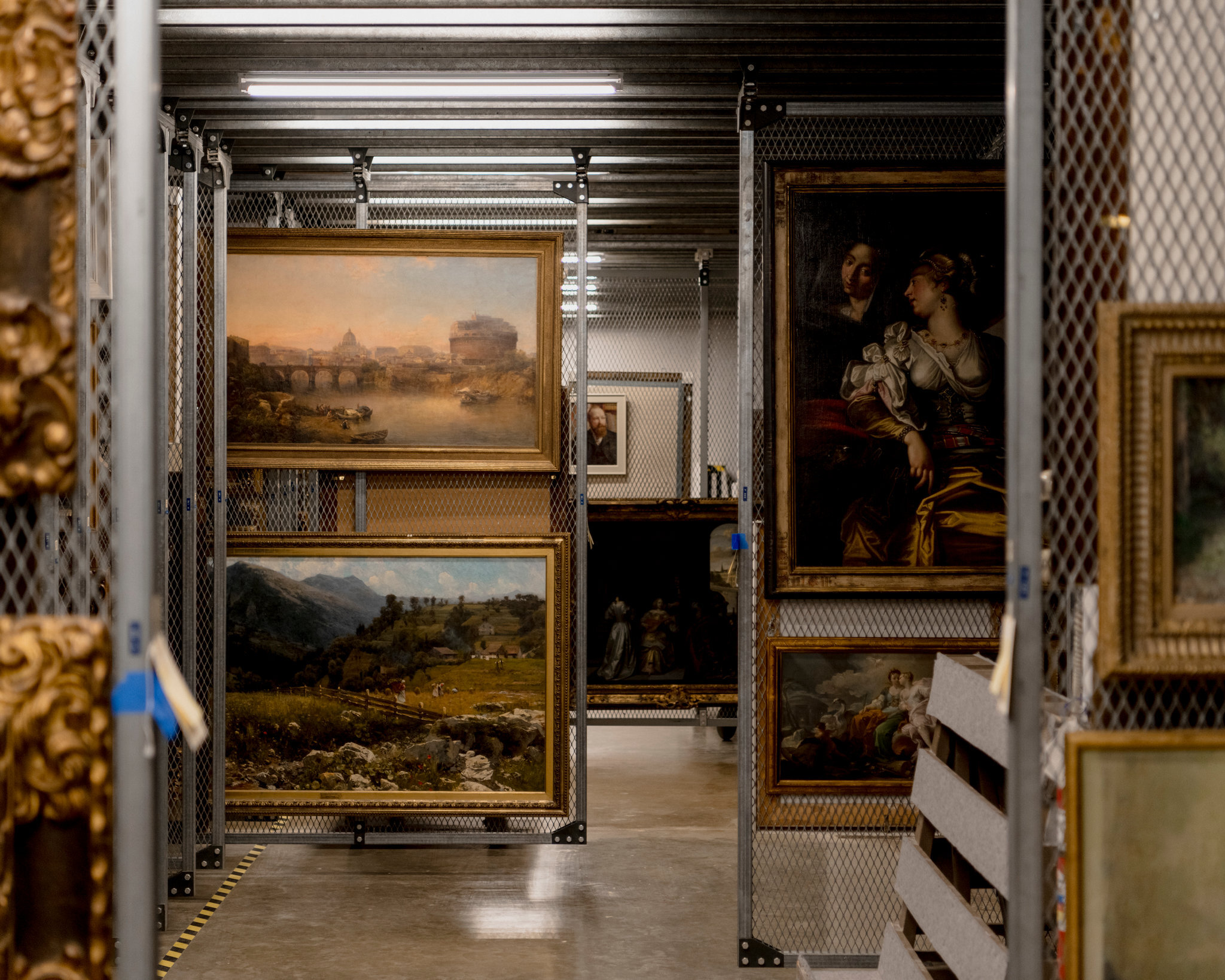How to Store Encaustic and Pigment Stick® Artwork
Image credit: Pamela W. Wallace’s studio.
The proper care and storage of encaustic and R&F Pigment Stick® paintings is similar in many ways to the handling of all fine art. For this reason we want to share with you a terrific resource written by the pros in the conservation department at the Metropolitan Museum of Art.
"The Care and Handling of Art Objects: Practices in The Metropolitan Museum of Art".
In this blog post we hope to shed light on the basic factors that can affect and/or damage artwork. We'll support these with considerations specific to the storage of the materials we produce here at R&F Handmade Paints.
Archive at the Metropolitan Museum of Art.
"Relative Humidity, temperature, and lighting are environmental factors that can have a huge impact on the present and future condition of artwork. Paintings are composite objects that will behave differently and independently from one another when there are pronounced fluctuations or extremes in environmental conditions. For ideal display and storage conditions, relative humidity should be maintained at an optimum of 45-55% and a temperature of 68-72 °F. Paintings should never be hung or stored near any source of heat, including heating vents and radiators."
Temperature considerations are especially true for encaustic paintings, which have a melting temperature of around 150 °F but they may begin to soften slightly with prolonged exposure below this temperature. While it may seem unlikely your house or storage space could reach these temperatures, it is possible (e.g. when sunlight is magnified by glass or during transport). You'll also want to avoid freezing temperatures which can be equally damaging.
"Appropriate lighting is also an important factor in preserving and protecting paintings. High light levels, and particularly the presence of ultraviolet (UV) light—the most damaging part of the spectrum—can encourage the deterioration of a wide variety of materials, including pigments, binding media such as oils and acrylics, and natural and synthetic varnishes."
In addition to preservation, working within these humidity, temperature, and lighting guidelines will help promote the proper drying and curing of Pigment Stick® works. Once cured, the best practice for storing your Pigment Stick® paintings is in ambient lighting, and out of direct sunlight.
Framing Pigment Stick® artwork should be handled in a similar fashion to the framing of oil paintings. Typically they are not framed under glass when on canvas or panel. They can be framed under glass when on paper or a thin or vulnerable support.
When framing an encaustic painting, we do not recommend placing it behind glass. A floater frame is an attractive option that also protects the edges of the painting from damage. Works on paper may be framed under glass. You'll want to ensure the glass is not in contact with the artwork.
For more information on transporting paintings, please visit our recent blog post - here.


